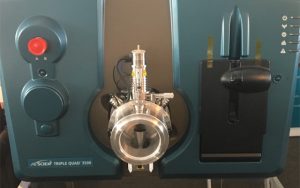The third Emerald Scientific Conference in San Diego gave scientists the opportunity to learn and network with cannabis entrepreneurs. The two-day conference was designed to strengthen relationships between the two major industries – science, and cannabis (including hemp).
“It serves as a platform for collaboration for the scientific industry,” said Ken Snoke, VP of the Emerald Conference.
The vision is to provide a technically driven conference, where the focus is on the science cannabis. The areas the conference focused on include:
- Analytical Testing
- Extraction and Infusion Sciences
- Cultivation Sciences
- Clinical Applications
- Inter-Lab Comparison and Proficiency Testing
- State Regulations
- Industry Standardization
New to the conference this year were people from the food safety industry. Snoke said they reached out to the parallel industry because “they were a group that went through this on their own.” He added, “We don’t have to recreate the wheel when it comes to lab testing and data analysis.”
Snoke’s opening remarks highlighted the opportunity for collaboration regarding scientific testing and analysis of the plant. His call to action; “Let’s get the testing people together.”
The idea is to bring in other, established segments to the cannabis industry to develop best practices.
Over the span of two days, the conference covered horticultural science, agricultural practices, extractions, and infused products and regulations.

Todd Dolatto kicked off the conference; he’s the Chair of the Oregon Health Authority’s Advisory Committee on Medical Marijuana. He spoke about opportunities for licensed cultivators in California, with the recent passage of Proposition 64 in November.
Now that California has gone recreational with cannabis sales, he explained, there are new regulatory boards and departments now involved in the sale of cannabis. For instance, the Department Health, the State Board of Equalization, and even the State Water Board. With California’s ongoing drought, Dolatto took a few minutes to drive home the importance of the farmers’ input to those groups.
There a lot of inherent issues in California with using water for the plant. These overseeing groups need insight into how the industry works. “I encourage strong advocacy to work with these agencies to do this right,” he said.
In order for these regulatory groups to get the best input on the cannabis industry, “we need to ensure regulations are science based,” he added. That means identifying individuals who are in it for self-promotion, and those who are qualified experts.
In response to Donald Trump’s election, Dolatto encouraged those in the industry to work with their state representatives, to protect the cannabis industry from the federal government.
Dolatto also dove into the topics of sustainability, energy, and the water intensive process used to grow the plant.
“There’s a global shortage of phosphorus,” he pointed out. “We need to figure out ways to recycle [soil] because we will run out of it.” He suggested a reduction of nutrient inputs to the soil, to give the microbes a chance to be able to do their job in helping the plant grow. According to the expert, there are some great nutrient regimens for sustainability, plant health, and biodiversity.
Newcomer to the cannabis space, Bryan Berger, is an Associate Professor at Lehigh University studying microbial contamination. He and his team report that Biofilm, which is a group of microorganisms that stick to each other and other surfaces, was triggered in response to metals like copper – which are commonly used in biocides. It’s a problem for cannabis cultivators.
It’s the ‘red stuff’, sometimes called ‘goo’ or ‘slime’, in hydroponic systems. The Biofilm sucks up nutrients, leaving the plant more open to infection, and it can block irrigation systems. Biofilm is a key mechanism of microbial attachment to the plant. His research into mitigation for the problem could benefit cannabis farmers.
Rick Crum, CEO of Humboldt DNA, spoke about pests, pathogens, and their effects on cannabis nursery and propagation.
Crum knows cannabis. He spent over twenty years at the epicenter of the largest area of producers in California. His expertise lies in cannabis pest and pathogen outbreaks.
“There’s a huge lack of a plan for dealing with these problems,” said the expert.
He identified some of the emerging cannabis problems on the horizon, for example russet mites, broad mites, and plant viruses.
“Broad mites were a flash in the pan, they took a lot of farms down, but hemp russet mites have huge, destructive potential,” he warned. “It has the potential to bring the industry to its knees.” Incredibly small and prolific, they can spread simply through the wind.
Crum also spoke out against the threshold for which plants can test positive for pesticides. He said it’s extremely low.
“The nursery world has a joke,” he said, “a cat with a flea collar could run through a grow and it would test too high in pesticide.”

Snoke says the next Emerald Conference will be even more tailored to the needs of the scientific testing community.
By forming an organizing committee, the next conference will have people working in the science, extraction, and cultivation fields in charge of the content. It’s a conference model that already works well in parallel industries, said Snoke. For example, the North American Chemical Residue Workshop (NACRW), who deal with pesticides in food.
“There’s no rulebook when it comes to extractions in cannabis,” said Snoke, “that’s why scientists from the food industry are looking at cannabis and hemp.”






